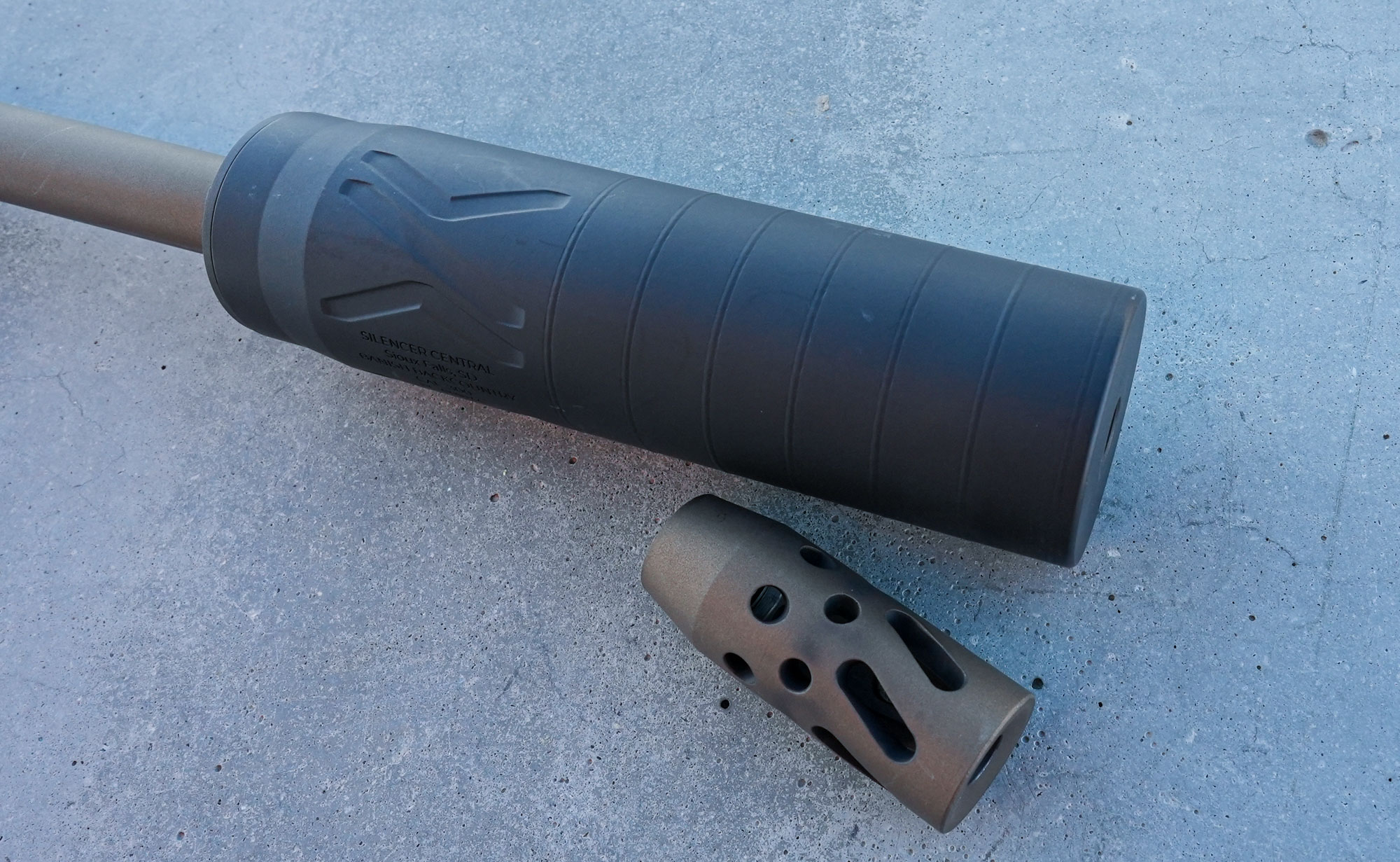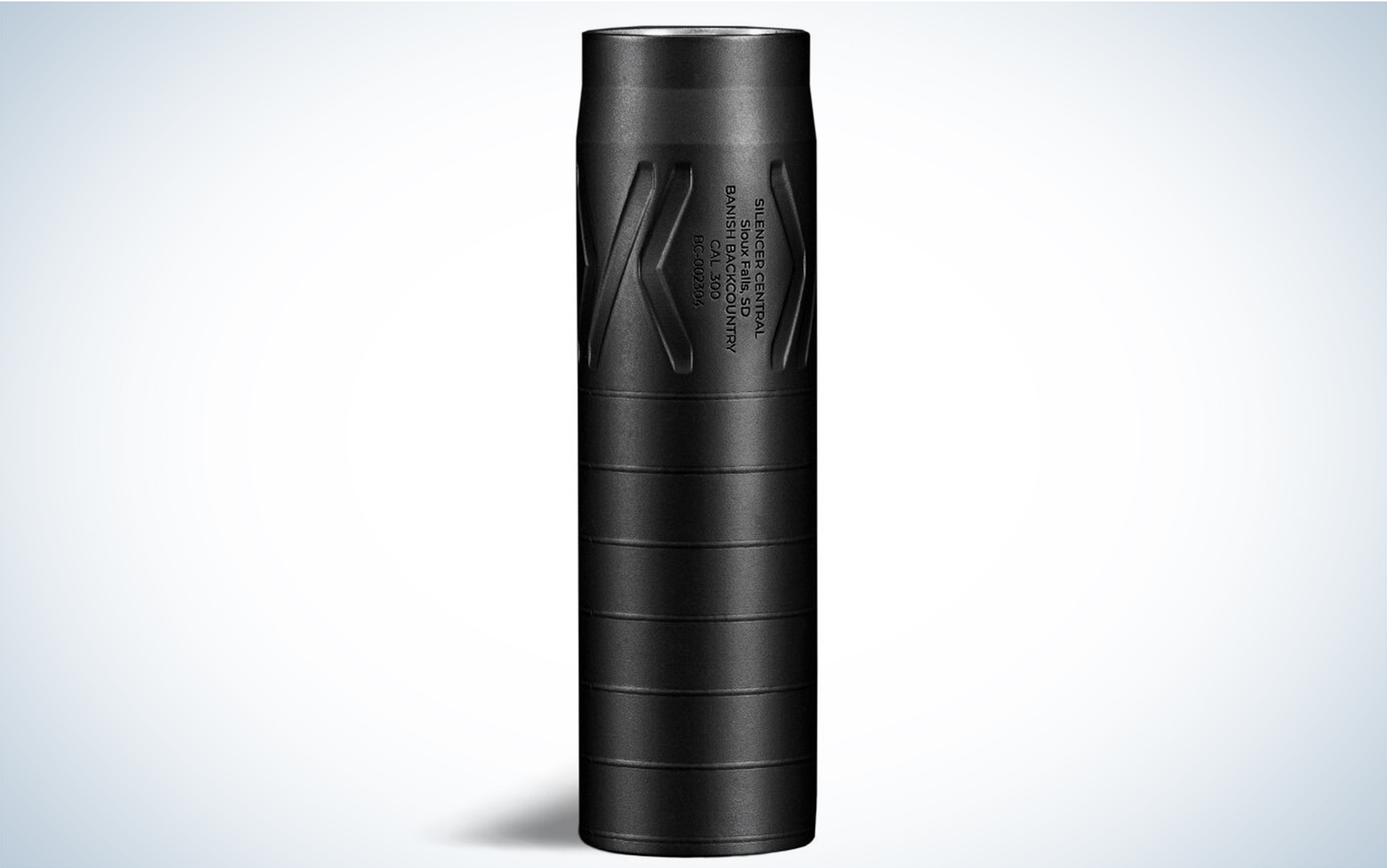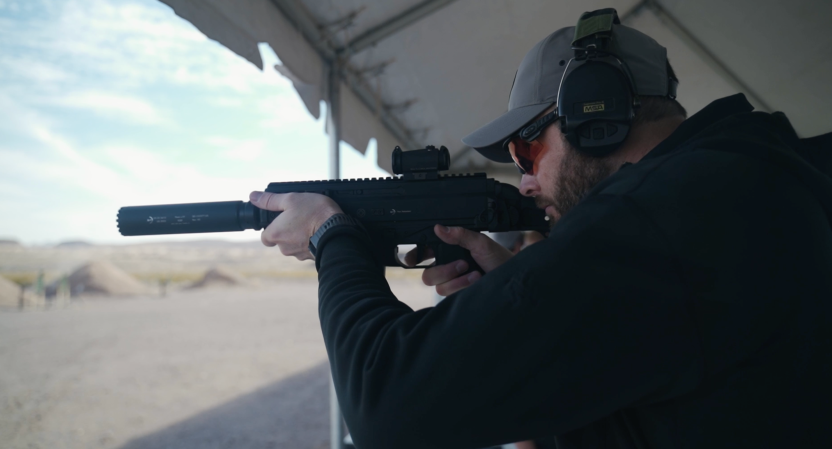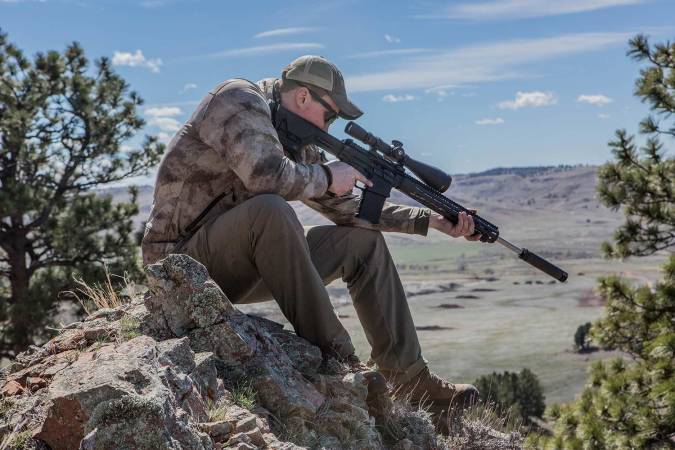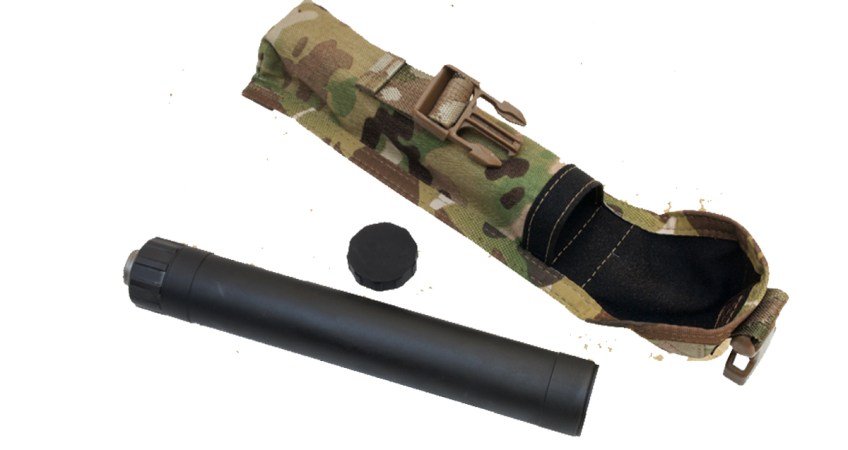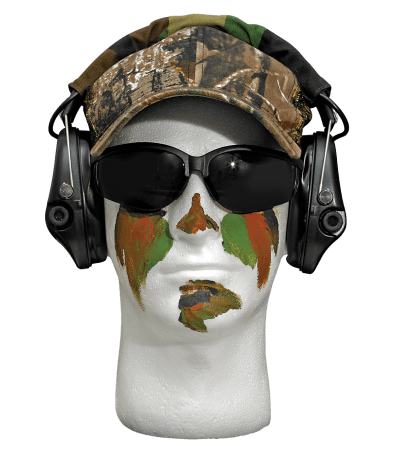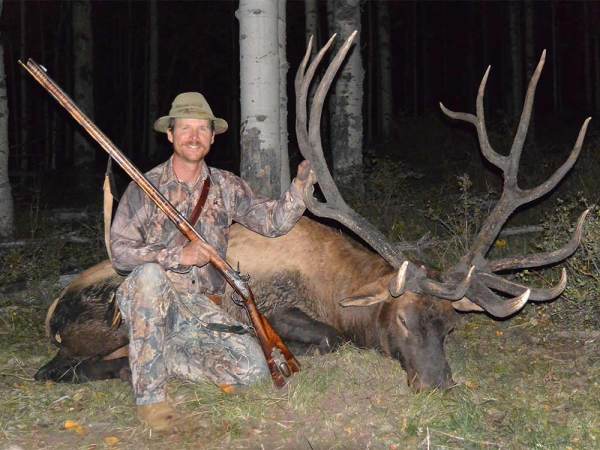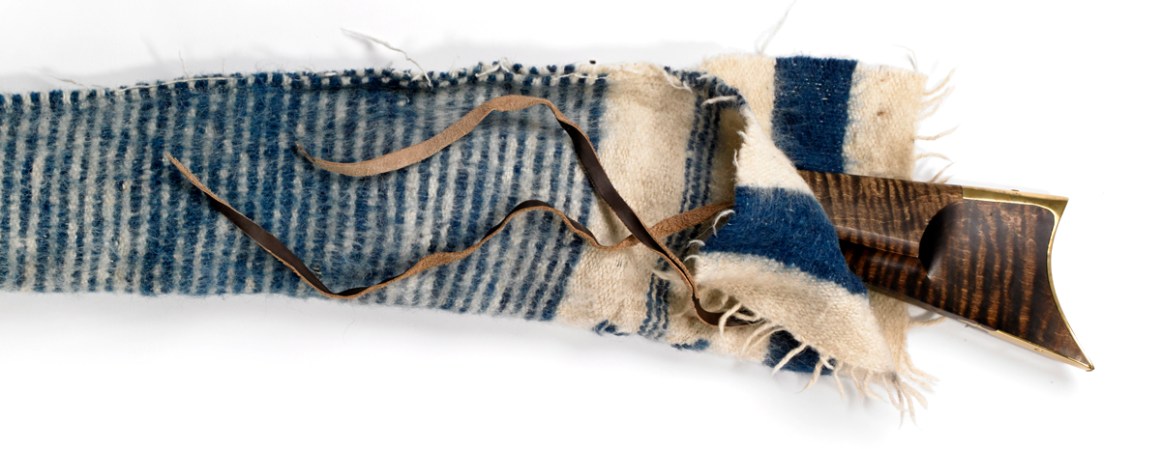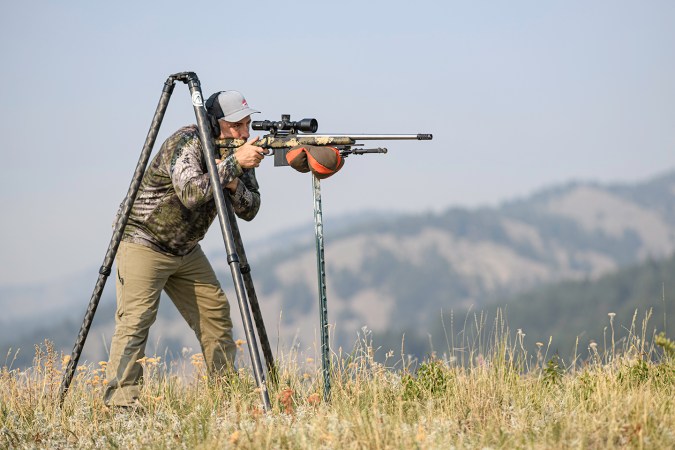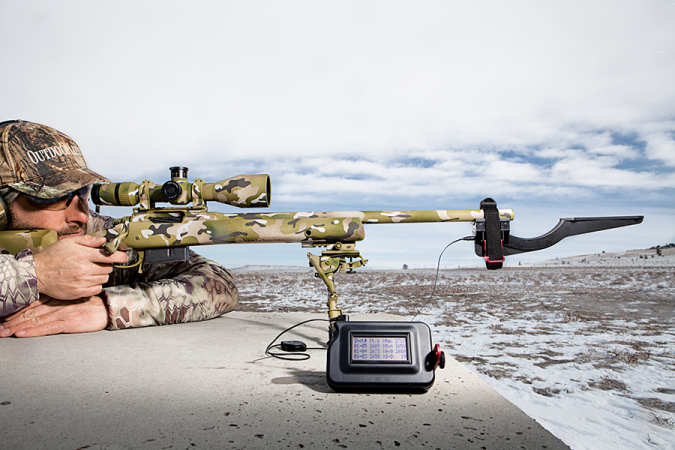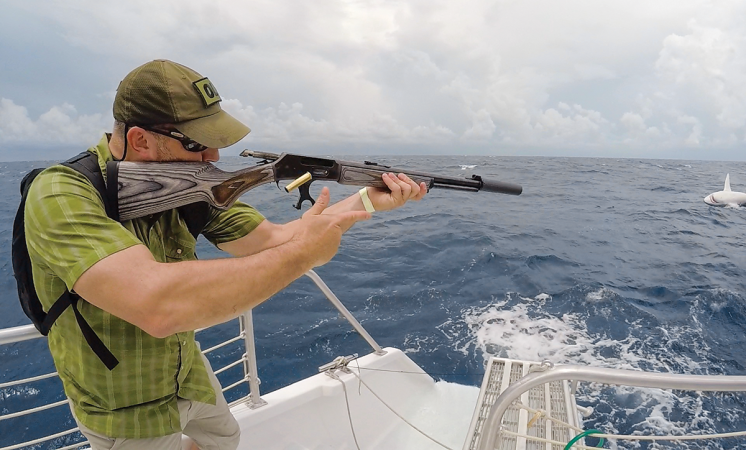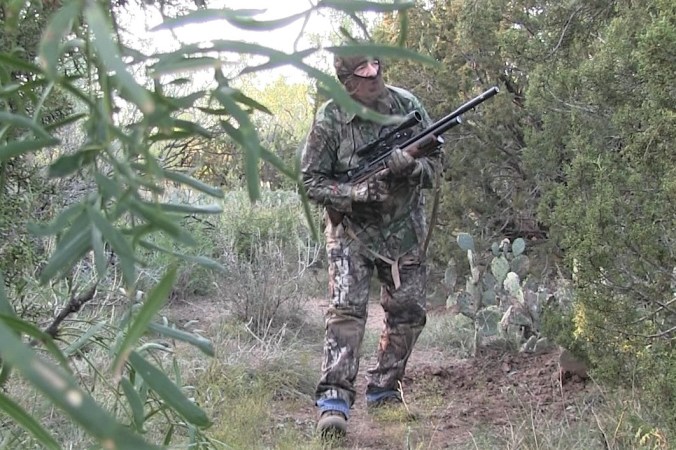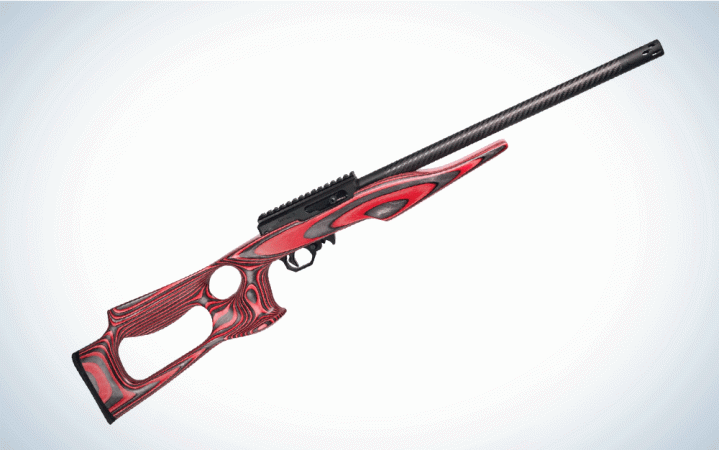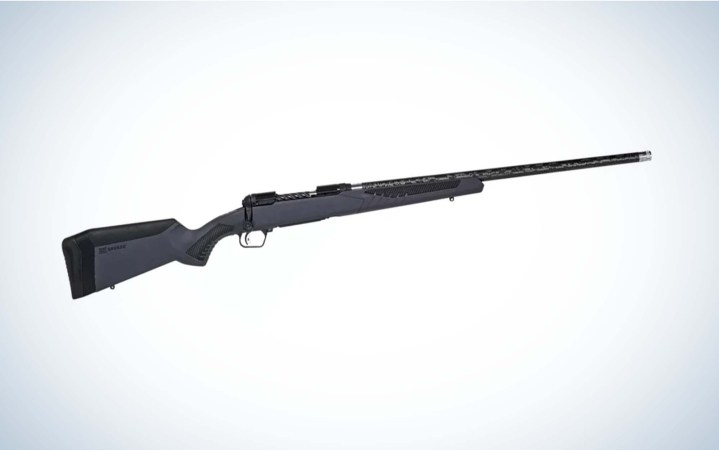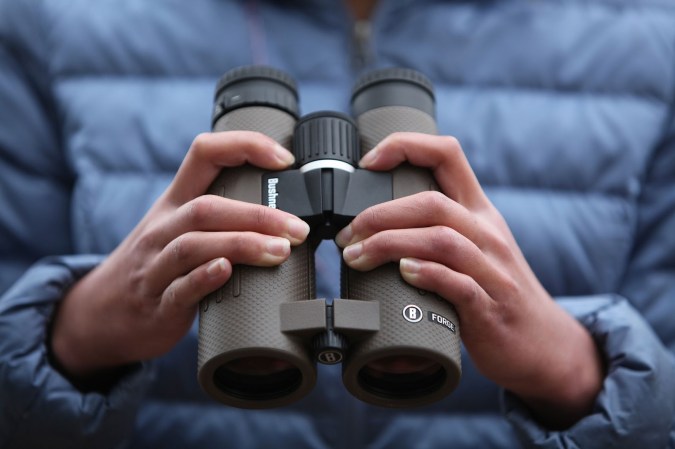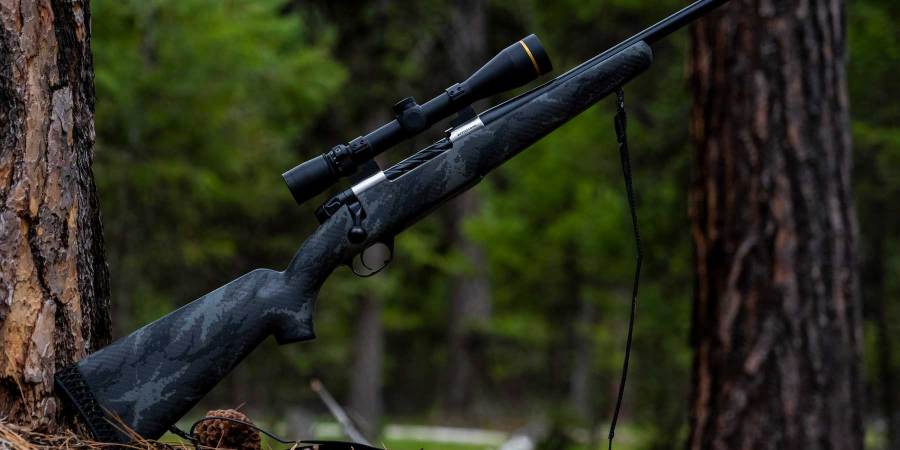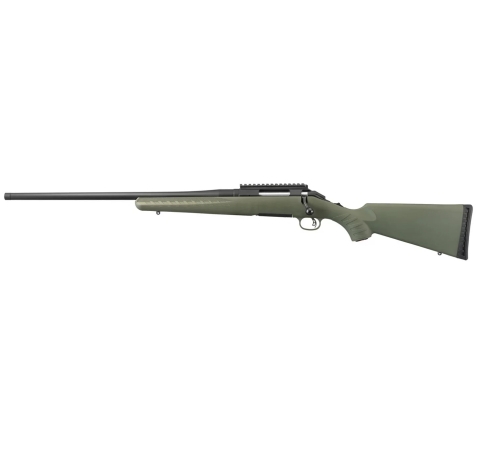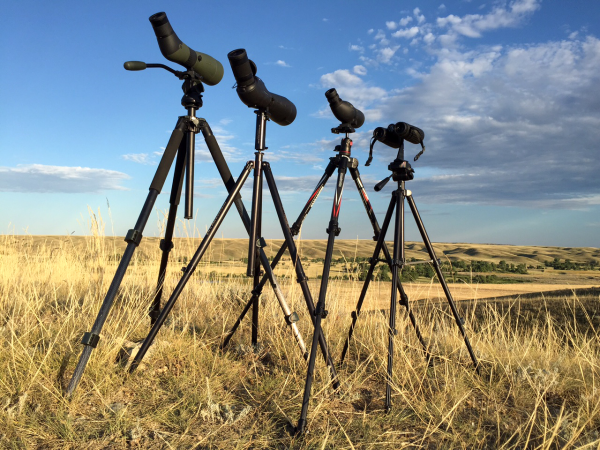We may earn revenue from the products available on this page and participate in affiliate programs. Learn More ›
The Banish Backcountry by Silencer Central is a clever little suppressor. As the name suggests, it was designed to be a lightweight option for outdoorsmen to run a silencer on their hunting rifle. In this role it succeeds admirably while also being versatile and handy. It is a smartly designed unit.
Banish Backcountry Specs
- Caliber: .300
- Length: 5.77 in. (measured, with 5/8-24 thread adapter)
- Diameter: 1.6 in.
- Baffle Bore Diameter: .350 in.
- Weight: 7.8 oz. (9.2 ounces with 5/8-24 thread adapter)
- Material: Titanium
- Finish: Cerakote
- Thread pitch: Selectable with available adapters
- Cartridge range: Up to .300 RUM
- Sound Reduction: 30dB
- Full-auto Rated: No
- Cost: $1,099
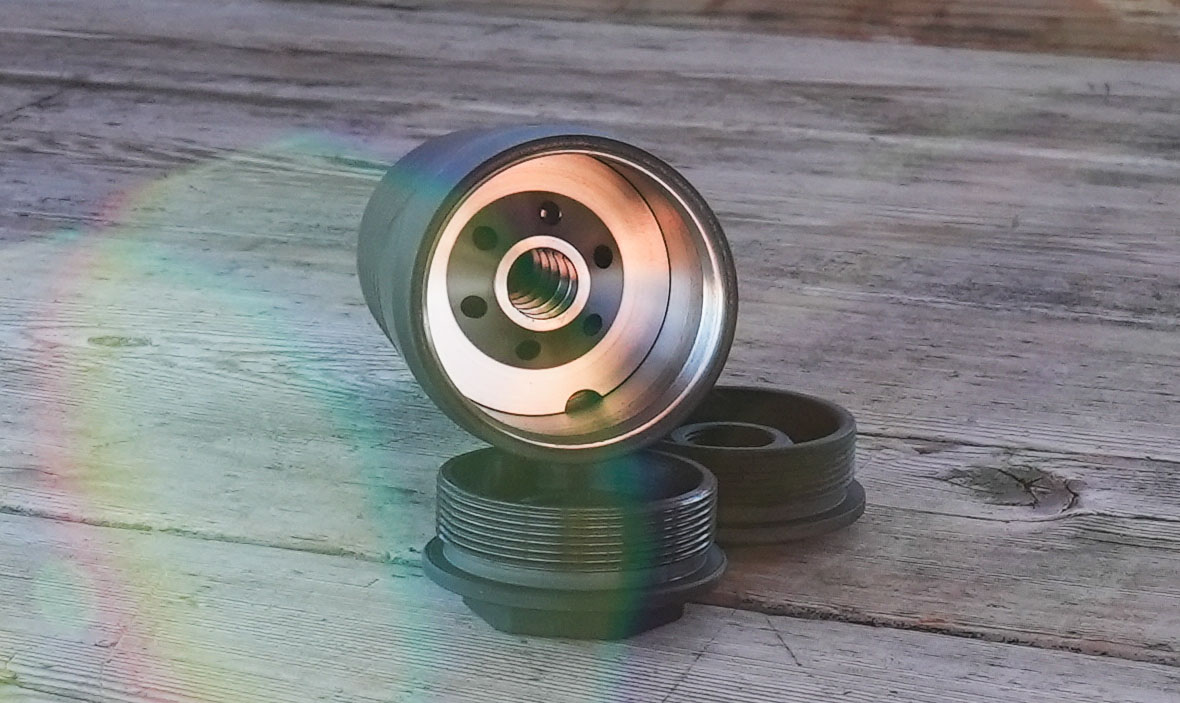
Banish Backcountry Features
The Banish Backcountry is a direct thread, fixed-length suppressor that accepts adapters to accommodate barrels with varying thread pitches. The adapters thread into the back of the can and weigh about an ounce or so. The figure that Silencer Central gives for the weight of the Banish Backcountry on their website (7.8 ounces) is without the adapter in place.
The adapters add an ounce or more to the weight of the Backcountry and since you need to use one to attach the suppressor to your barrel, figure on the can weighing 9 ounces or so. Another option is to attach Silencer Central’s Banish 30 Gold Muzzle Brake to your rifle, in which case you can thread the Backcountry right to it. In concert with the brake, the Backcountry weighs a touch over 10 ounces.
Using the Adapters
My suppressor came with the 5/8-24 adapter, which is the most common thread pitch in the U.S. on larger caliber (6mm and up) barrels. I also got a ½-28 adapter. That thread pitch is typical on AR-15 .223 barrels and rimfire rifles. This allows the Banish Backcountry to pull duty on a variety of firearms.
The adapters have a bit over a third of an inch of thread engagement, so when they are screwed into the back of the suppressor body there’s plenty of material to contain the pressures generated by the shot. Silencer Central rates the Backcountry for use on cartridges up to .300 RUM, so it is a stout unit that can handle even the sportiest .30-caliber magnums.
The rear of the adapter has a raised hex nut shape machined into it. That hex is 1-inch across and helps the user cinch the adapter snuggly into place. The adapters thread into the suppressor body in a standard manner—clockwise to tighten (“righty-tighty” for the mechanically challenged). The suppressor also threads this way onto the barrel.
I mention this because it is important that the adapter is secured firmly in the back of the can. When you remove the suppressor from the rifle, you want the adapter to unscrew from the barrel and not back out of the suppressor itself.
Silencer Central ships the Backcountry Banish with some blue thread locker to keep the adapter in place. I haven’t used the thread locker on mine, which so far has worked out fine. By using a wrench to secure the adapter to the back of the can and then hand-tightening the can on the barrel I’ve encountered no issues.
Servicing the Banish Backcountry
Though the Banish Backcountry isn’t a fully user-serviceable suppressor since the baffle stack is fixed in place, you do have access to the main blast chamber when the adapter is removed. This lets you easily perform a visual inspection of the innards and will help you clean the can when the time comes.
Cleaning a Suppressor
Despite what some silencer manufacturers say, it is a good idea to clean suppressors periodically. The best way to gauge whether a can needs to be cleaned is by weighing it on a scale.
One of the first things you should do when you get a new suppressor—other than making an offering of thanks to the ballistic gods that your precious tube has been released from ATF jail—is to record its weight on an accurate scale. I keep this data in a spreadsheet, but you can also use a Sharpie to write it directly on the can itself.
As you put rounds through the can and fouling builds up, weigh it again from time to time. Once you get a couple ounces of carbon and gunk built up in the can it is time to give it a good scrubbing.
Start by soaking it in a solvent like CLP. Submerge it overnight to let the chemicals do their thing. After that, put it in a sonic cleaner. You can also use a nylon bore brush to knock stuff free. Once you go through this process, weigh the can again to see how much fouling you removed. You’ll never get the can back to the original weight, but if you can remove most of the buildup you’ve done well. You might need to go through the soak and clean cycle more than once.
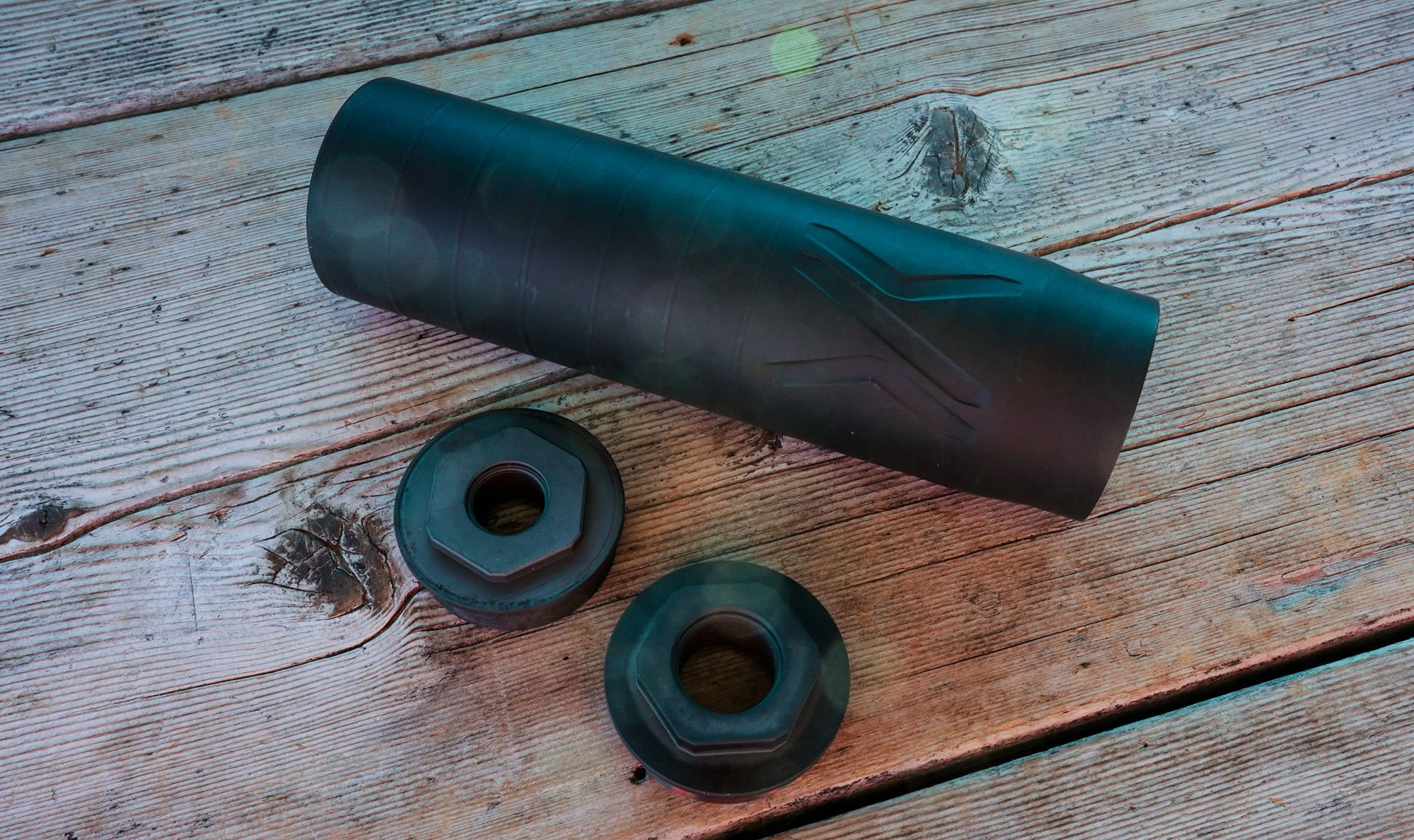
Banish Backcountry Craftsmanship
Silencer Central did a nice job with the construction of the Backcountry Banish. The titanium body has a series of shallow grooves machined on the rear of the body to give the shooter some grip when attaching and detaching the suppressor.
The suppressor has a shallow taper at the rear of the body and you can see slightly raised rings from the welds that join the baffles together. These subtle visual elements keep the Banish Backcountry from looking like a simple tube but they aren’t overdone either.
I like the ratio of the length to diameter of the can as well. Cans that are super skinny add extra length to a rifle, which is not great for hunting applications. And cans that are too short and fat just look goofy. The Banish Backcountry strikes a nice balance.
The engraved markings on the can identifying the make, model, serial number, caliber, and place of origin are cleanly executed. The lettering is small and unobtrusive but highly legible.
The suppressor is finished in black Cerakote and should stand up well to hard use.
Shooting the Banish Backcountry
I’ve run the suppressor on two rifles so far, both hunting rigs. One was a Savage Impulse Driven Hunter in 6.5 Creedmoor and the other is an H-S Precision SPR Pro Series chambered in 7 PRC. In both cases the suppressor performed admirably.
I got a good feel for the hearing-safe rating on the Banish Backcountry while stalking hogs without ear pro in the thick mesquite in south-central Texas. Mounted on the Impulse I shot a nice hog without hurting my ears.
During my range work, I always follow the military rule of redundancy when it comes to hearing protection, which is “two is one, one is none.” Meaning I want two layers of hearing protection whenever I shoot—either ear plugs combined with over-the-ear muffs, or a suppressor with some other type of hearing protection.
Though suppressor companies like to tout their products as “hearing safe” it is still a good idea to double up on the protection with any extended shooting session.
Typically, I’ll use Surefire Sonic Defenders with a suppressor and call it good. I highly recommend the Full-Block EP5 model as they block significantly more sound than the EP3s.
Banish Backcountry Accuracy and POI Shift
I saw no degradation in the accuracy of either rifle with the Banish Backcountry attached. As the quality of suppressors has generally improved over the years it is less common to see groups open up when running one.
In some instances, you’ll see accuracy improve when combining specific rifles and suppressors, which is a bonus. In the case of the Backcountry the group sizes held steady. Both those rifles are accurate on their own—they are solidly sub-MOA with factory ammo—so there wasn’t much room for improvement in that regard.
Though the Backcountry doesn’t weigh much, there’s still enough mass there to change a rifle’s point of impact. In the case of my H-S Precision, which has a “magnum sporter” barrel contour, the POI shifted down about an inch or so at 100 yards. There was no horizontal shift at all.
Read Next: Best Rifle Bipods Tested and Reviewed
Silencer Central Purchasing Process
One of the great advantages of the Banish family of suppressors is how easy they are to purchase. Silencer Central takes as much of the pain as possible out of the procedure to acquire a suppressor.
Anyone who’s been through it before knows it is a major hassle, involving a pile of forms, the need to get fingerprinted, and a complex and lengthy approval process. While Silencer Central can’t control how quickly the ATF reviews the paperwork, they do an amazing job of making sure all the details are in order so that your application doesn’t hit any snags.
The way Silencer Central automates the process of filling out the forms electronically is a godsend, to say nothing of everything else they do to make sure a purchase conforms to all the rules and requirements. And the icing on the cake is that when the application is approved, Silencer Central mails the suppressor to your front door. If I were texting a friend about this, I would add a chef’s kiss emoji here. I can’t recommend them highly enough.
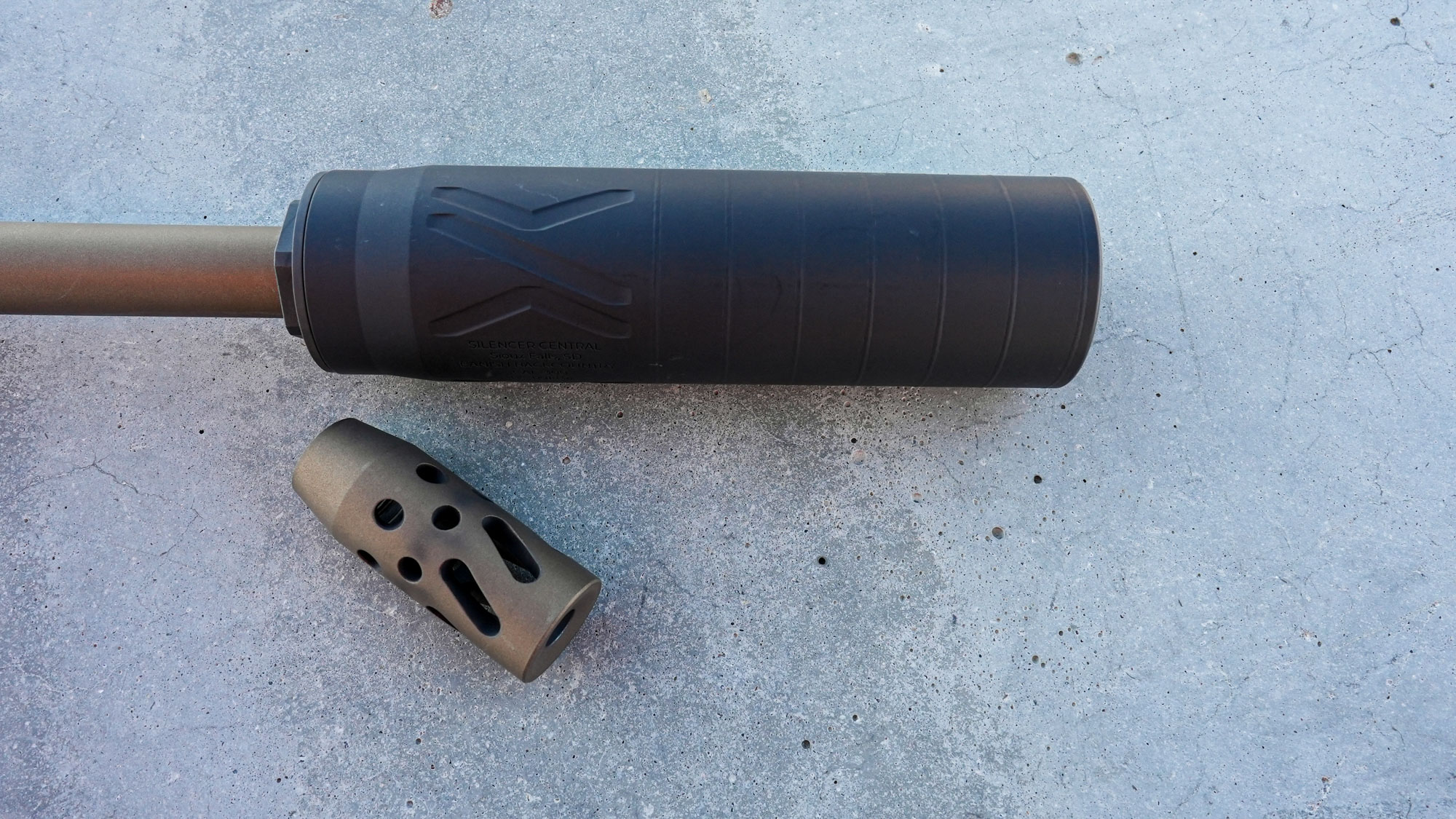
What the Banish Backcountry Does Well
The Banish Backcountry fulfills its mission as a lightweight, quiet, and high-quality suppressor for hunters. While there are some suppressors that trim a bit more weight from their systems, the Backcountry makes up for that by being easy to service and interchangeable with different threading systems.
Thanks to its different thread adapters you can run the Banish Backcountry on any .30-caliber or smaller rifle in your collection. The adapters cost $99, an investment that adds versatility to the can.
What It Could Do Better
The Backcountry doesn’t have any real flaws or shortcomings. Getting picky, the welds on the baffles could be a bit more even. They are thicker and more pronounced in some spots than in others. But that’s a minor quibble.
Final Thoughts on the Banish Backcountry
The Backcountry isn’t cheap, but in my mind its versatility makes up for the price. For a hunter or shooter wanting to invest in a single suppressor to run on numerous rifles, it is an excellent option. And the fact that Silencer Central makes acquiring their suppressors so easy is an added benefit.

